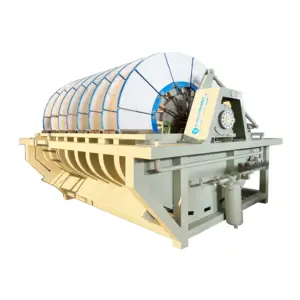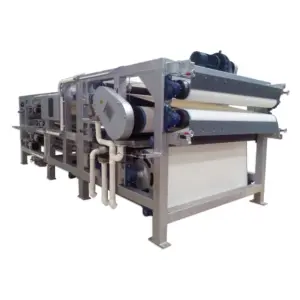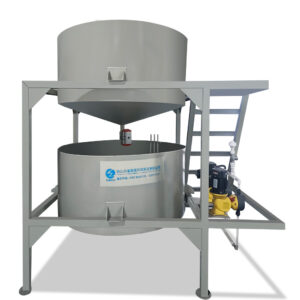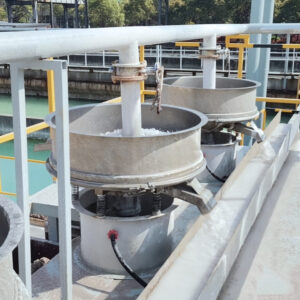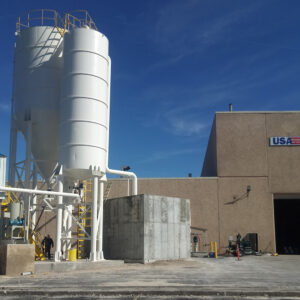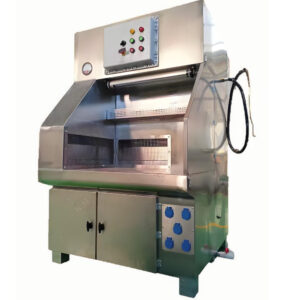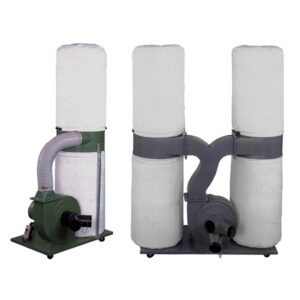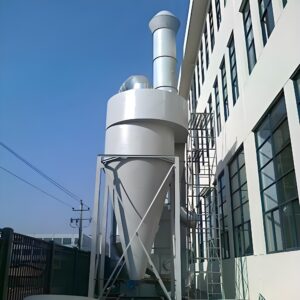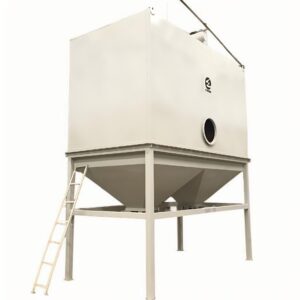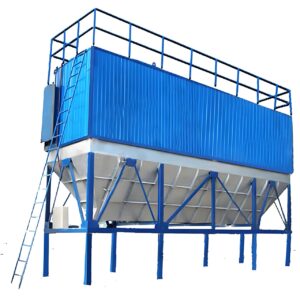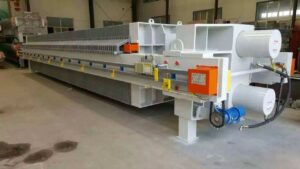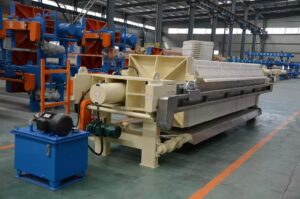Industriële afvalwaterzuiveringsinstallaties staan onder toenemende druk om een hogere ontwateringsefficiëntie te bereiken en tegelijkertijd de operationele kosten te beheersen. Nu de regelgeving strenger wordt en de afvoerkosten stijgen, worstelen veel operators met verouderde apparatuur die inconsistente resultaten levert, vaak stilstaat en veel polymeer verbruikt. De gevolgen reiken verder dan de directe kosten - slechte ontwateringsprestaties kunnen leiden tot overtredingen van de regelgeving, hogere transportkosten en een verminderde efficiëntie van de installatie.
Deze uitgebreide bandfilterpers technische gids gaat in op deze kritieke uitdagingen door gedetailleerde operationele inzichten, onderhoudsprotocollen en selectiecriteria te bieden die uw ontwateringsprestaties kunnen verbeteren. Of u nu nieuwe apparatuur evalueert of bestaande systemen optimaliseert, de volgende analyse combineert technische specificaties met praktijkervaringen om u te helpen consistente, kosteneffectieve resultaten te behalen.
Wat is een bandfilterpers en hoe werkt het?
Een bandfilterpers is een van de meest veelzijdige en betrouwbare ontwateringstechnologieën voor industriële en gemeentelijke toepassingen. Dit continu werkende systeem maakt gebruik van twee gespannen filterbanden om geleidelijk water te verwijderen uit geconditioneerd slib via drie verschillende zones: drainage door zwaartekracht, consolidatie onder lage druk en extractie onder hoge druk.
Het proces begint wanneer geconditioneerd slib de zwaartekrachtafvoerzone binnenkomt, waar vrij water op natuurlijke wijze wordt afgescheiden door het weefsel van de onderste band. Volgens recente gegevens uit de industrie kan goed geconditioneerd slib alleen al in deze eerste fase een vastestofgehalte van 15-20% bereiken. Het gedeeltelijk ontwaterde materiaal gaat dan naar de wigzone, waar convergerende banden een lichte druk uitoefenen, meestal 2-4 psi, om extra interstitieel water te onttrekken.
Ontwateringsmechanisme en fysica
De laatste hogedrukzone gebruikt een reeks rollen met afnemende diameter om de druk geleidelijk op te voeren tot 150-200 psi. Deze bandfiltersysteem De configuratie creëert een S-curvebaan die de contacttijd maximaliseert terwijl er gecontroleerde spanning op de slibkoek wordt uitgeoefend. Industrieel onderzoek van de Water Environment Federation geeft aan dat een optimale rolconfiguratie de uiteindelijke vaste deeltjes in het slib met 3-5 procentpunten kan verbeteren in vergelijking met persen in één fase.
| Ontwateringszone | Drukbereik | Typische toename vaste stoffen | Primair mechanisme |
|---|---|---|---|
| Zwaartekrachtafvoer | 0 psi | 12-18% | Vrijwaterscheiding |
| Lage druk | 2-4 psi | 18-22% | Consolidatie |
| Hoge druk | 50-200 psi | 22-28% | Mechanische extractie |
Wat zijn de belangrijkste onderdelen van bandfiltreersystemen?
Inzicht in de functionaliteit van de componenten is essentieel voor een effectieve werking en onderhoud. Het hart van elke bandfilterpers bestaat uit vier kritieke subsystemen: bandvolgmechanismen, polymeertoevoersystemen, waswatersystemen en koekafvoermechanismen.
Bandconfiguratie en materialen
Modern PORVOO Schone Technologie systemen maken gebruik van geavanceerde polyester weefsels met specifieke permeabiliteitsklassen die zijn afgestemd op de slibkarakteristieken. De keuze van de band is van grote invloed op de prestaties: te doorlatend en er gaan fijne vaste deeltjes doorheen; te dicht en de afvoer wordt beperkt. Uit onze ervaring blijkt dat een poreusheid tussen 200-400 CFM doorgaans een optimale balans oplevert voor gemeentelijke toepassingen.
Riemvolgsystemen zorgen voor de juiste uitlijning door hydraulische of pneumatische aanpassingen. Verkeerd uitgelijnde riemen kunnen het effectieve filtratiegebied met 15-20% verkleinen en slijtagepatronen versnellen. Experts uit de industrie raden toleranties van ±0,5 inch aan voor optimale prestaties.
Polymeer conditioneringssystemen
Effectieve conditionering van polymeer blijft de meest kritieke factor voor het succes van een bandfilterpers. Het conditioneringssysteem moet zorgen voor een goede menging terwijl het afschuiven van het polymeer vermeden wordt. Onderzoek door de American Water Works Association toont aan dat een goede conditionering de ontwateringsprestaties met 40-60% kan verbeteren in vergelijking met onvoldoende menging.
| Type slib | Polymeerdosering (lb/ton DS) | Typische cake vaste stoffen | Bereik voedingssnelheid |
|---|---|---|---|
| Primair | 8-15 | 25-30% | 500-1500 gpm |
| Secundair | 15-25 | 18-25% | 300-800 gpm |
| Gemengd | 12-20 | 22-28% | 400-1200 gmp |
Hoe gebruik je een effectieve bandfilterpers?
Succesvol werking bandfilterpers vereist systematische aandacht voor vier belangrijke parameters: polymeerdosering, bandsnelheid, riemspanning en waswaterdebiet. Deze variabelen werken dynamisch op elkaar in en voor optimalisatie is meestal voortdurende controle en bijstelling nodig.
Opstart- en voedingssnelheidoptimalisatie
Begin met conservatieve instellingen: polymeerdosering aan de bovenkant van het aanbevolen bereik, bandsnelheid 15-20% langzamer dan de ontwerpcapaciteit en waswaterdebiet op maximaal aanbevolen debiet. Terwijl het systeem stabiliseert, optimaliseert u geleidelijk elke parameter terwijl u het gehalte aan vaste deeltjes in de koek en de kwaliteit van het filtraat bewaakt.
De industrie is het erover eens dat aanpassingen van de toevoersnelheid niet meer dan 20% per uur mogen zijn om een consistente conditionering te behouden. Snelle veranderingen kunnen de polymeer-slibmatrix destabiliseren, wat leidt tot doorbraak en verminderde koekdeeltjes. Onze ervaring is dat het handhaven van consistente voedingssnelheden betere resultaten oplevert dan frequente aanpassingen die de optimale omstandigheden najagen.
Veelvoorkomende problemen oplossen
Het dichtslibben van de band is de meest voorkomende operationele uitdaging, meestal veroorzaakt door onvoldoende waswaterdruk of een onjuiste polymeerkeuze. Wanneer de helderheid van het filtraat plotseling verslechtert, controleer dan of de sproeikoppen van de was verstopt zijn en controleer de kalibratie van het polymeertoevoersysteem. Een onderzoek uit 2023 toonde aan dat 75% van de prestatieproblemen eerder te wijten is aan problemen met het polymeersysteem dan aan mechanische defecten.
"Consistente polymeerconditionering is belangrijker dan perfecte mechanische instellingen. We hebben systemen gezien die uitstekende resultaten behaalden met basisapparatuur wanneer de polymeertoepassing werd geoptimaliseerd." - Senior procesingenieur, gemeentelijke waterzuivering
Wat zijn de belangrijkste voordelen en beperkingen van bandfiltratiesystemen?
Bandenfilterpersen blinken uit in toepassingen die een continue werking, gematigde droogte van de koek en operationele flexibiliteit vereisen. Hun lineaire ontwerp is geschikt voor wisselende voedingssnelheden, waardoor ze ideaal zijn voor installaties met een fluctuerende slibproductie.
Prestatievoordelen
Het grootste voordeel is de continue werking. In tegenstelling tot batchsystemen, industriële bandfilter eenheden kunnen variabele ladingen verwerken zonder onderbreking. Het energieverbruik ligt gewoonlijk tussen 15-25 kWh per ton droge stof, wat aanzienlijk lager is dan bij centrifugesystemen. Bovendien blijft door de zachte ontwatering de koekstructuur behouden, wat de verwerking en het transport vergemakkelijkt.
Een ander sterk punt is de operationele flexibiliteit. Aanpassingen aan de bandsnelheid en de druk maken real-time optimalisatie mogelijk voor variërende slibkarakteristieken. Dit aanpassingsvermogen is vooral waardevol in industriële toepassingen waar afvalstromen seizoensgebonden of met productieschema's variëren.
Systeembeperkingen en overwegingen
Terwijl bandfilterpersen een uitstekende veelzijdigheid bieden, vereisen ze hogere polymeerdoseringen dan sommige concurrerende technologieën. Het typische verbruik varieert van 12-25 pond per ton droge stof, vergeleken met 8-15 pond voor centrifuges. Deze kosten wegen echter vaak op tegen het lagere energieverbruik en de lagere onderhoudsvereisten.
De kosten voor het vervangen van riemen zijn lopende bedrijfskosten, met een typische levensduur die varieert van 1-3 jaar afhankelijk van de zwaarte van de toepassing. Geplande vervangingsschema's kunnen echter onverwachte stilstand tot een minimum beperken en zorgen voor consistente prestaties.
Hoe kiest u de juiste bandfilterpers voor uw toepassing?
De selectie van apparatuur begint met een uitgebreide slibkarakterisering en definitie van de procesvereisten. Kritische parameters zijn onder andere slibproductiesnelheden, variaties in het vaste stofgehalte, de beoogde droogte van de koek en de beschikbare ruimtebeperkingen.
Overwegingen met betrekking tot grootte en capaciteit
De bandbreedte is direct gerelateerd aan de verwerkingscapaciteit, met standaardmaten van 1,0 tot 3,0 meter. Een recente analyse van meer dan 200 installaties toont aan dat systemen van 2,0 meter een optimale kosten-prestatieverhouding bieden voor gemeentelijke toepassingen die slibstromen van 500-2000 GPM verwerken.
Houd rekening met de vereisten voor piekcapaciteit in plaats van gemiddelde debieten. Systemen die constant boven de ontwerpcapaciteit van 85% werken, ondervinden versnelde slijtage en verminderde optimalisatieflexibiliteit. Geavanceerde filtratieapparatuur van bekende fabrikanten bevat meestal geautomatiseerde controles die de operationele consistentie verbeteren.
Toepassingsspecifieke vereisten
Industriële toepassingen kunnen speciale materialen of configuraties vereisen. Voedselverwerkende installaties hebben baat bij sanitaire ontwerpen met CIP-mogelijkheden (Clean-in-Place), terwijl petrochemische toepassingen wellicht explosieveilige elektrische componenten nodig hebben.
Welke onderhoudsprocedures zorgen voor optimale prestaties?
Preventieve onderhoudsprogramma's hebben een aanzienlijke invloed op de prestaties en bedrijfskosten op de lange termijn. Goed onderhouden systemen halen routinematig 95%+ uptime met voorspelbare bedrijfskosten.
Dagelijkse en wekelijkse inspectieprotocollen
Dagelijkse inspecties moeten gericht zijn op het volgen van de band, de effectiviteit van de wasnevel en de kwaliteit van het filtraat. Wekelijkse procedures omvatten het controleren van de bandspanning, het smeren van de lagers en kalibratiecontroles van het polymeer systeem. Documentatie van deze parameters maakt trendanalyse en planning van voorspellend onderhoud mogelijk.
Onderhoudsprofessionals zeggen hierover: "Consistente dagelijkse aandacht voorkomt 80% grote mechanische problemen. De sleutel is het vastleggen van routineprocedures die operators efficiënt kunnen uitvoeren zonder afbreuk te doen aan de grondigheid."
Componentenbeheer op lange termijn
Het plannen van het vervangen van de band op basis van prestatiegegevens in plaats van willekeurige tijdsintervallen optimaliseert de kosten. Monitor de ontwikkeling van de vaste deeltjes in de cake, de helderheid van het filtraat en het polymeerverbruik als belangrijke indicatoren van de conditie van de band. Prestatiedegradatie treedt meestal geleidelijk op, waardoor geplande vervanging tijdens geplande onderhoudsintervallen mogelijk is.
Hoe verhouden bandfilterpersen zich tot andere ontwateringstechnologieën?
De keuze van technologie vereist een zorgvuldige evaluatie van kapitaalkosten, bedrijfskosten, prestatie-eisen en locatiebeperkingen. Bandenfilterpersen houden het midden tussen onderhoudsintensieve centrifuges met hoge prestaties en goedkopere filterpersen die in batches werken.
| Technologie | Kapitaalkosten | Bedrijfskosten | Cake vaste stoffen | Automatiseringsniveau |
|---|---|---|---|---|
| Riemfilterpers | Medium | Medium | 22-28% | Hoog |
| Centrifuge | Hoog | Hoog | 25-32% | Zeer hoog |
| Plaat & Frame | Laag | Laag | 30-40% | Laag |
| Roterende trommel | Middelhoog | Medium | 20-25% | Hoog |
Voor gemeentelijke toepassingen die 500-2000 GPM verwerken, bieden bandfilterpersen meestal de beste balans tussen prestaties, betrouwbaarheid en bedrijfskosten. Hun continue werking en matige automatiseringseisen zijn geschikt voor de meeste faciliteiten.
De toekomst van bandfiltertechnologie richt zich op verbeterde automatisering, voorspellende onderhoudsmogelijkheden en verbeterde energie-efficiëntie. Geavanceerde besturingssystemen met algoritmes voor machinaal leren zijn veelbelovend voor het automatisch optimaliseren van polymeerdosering en operationele parameters.
Deze uitgebreide technische gids biedt de basis voor een succesvolle implementatie en werking van een bandfilterpers. Of het nu gaat om het evalueren van nieuwe installaties of het optimaliseren van bestaande systemen, de principes die hier worden beschreven kunnen de ontwateringsprestaties aanzienlijk verbeteren en tegelijkertijd de operationele kosten in de hand houden. Voor specifieke toepassingseisen en gedetailleerde apparatuurspecificaties kunt u overwegen advies in te winnen bij ervaren specialisten in filtratiesystemen die oplossingen op maat kunnen bieden voor uw unieke operationele uitdagingen.
Met welke specifieke uitdagingen op het gebied van ontwatering wordt uw bedrijf momenteel geconfronteerd en hoe kan de bandfiltertechnologie aan uw operationele eisen voldoen?
Veelgestelde vragen
Q: Wat is een bandfilterpers en hoe werkt deze?
A: Een bandfilterpers is een mechanisch apparaat dat wordt gebruikt om slib te ontwateren door vloeistoffen van vaste stoffen te scheiden. Het werkt door slib op een bewegende band te voeren waar druk wordt uitgeoefend tussen twee banden of rollen. Het water wordt eruit geperst en er blijft een vaste "koek" achter met een verlaagd vochtgehalte. Belangrijke onderdelen zijn het slibaanvoersysteem, de riemen, de rollen, het hydraulische spansysteem en het sproeiwatersysteem. Dit proces vermindert efficiënt het slibvolume en bereidt het voor op afvoer of verdere verwerking, waardoor het essentieel is voor afvalwaterbehandeling en industriële toepassingen.
Q: Wat zijn de belangrijkste onderdelen van de technische handleiding van de bandfilterpers?
A: De gids benadrukt cruciale onderdelen zoals:
- Riemen: verantwoordelijk voor het uitoefenen van druk en het ontwateren van het slib.
- Rollen: ondersteunen en geleiden de riemen soepel.
- Hydraulisch systeem: levert de nodige spanning en druk voor de werking.
- Waswatersysteem: reinigt de riemen tijdens het gebruik om verstopping te voorkomen.
- Polymeertoevoersysteem (optioneel): verbetert de slibflocculatie voor een betere ontwatering.
Inzicht in deze componenten helpt operators om efficiënte prestaties te behouden en operationele problemen op te lossen.
Q: Wat zijn de essentiële operationele parameters voor een optimale werking van een bandfilterpers?
A: Voor een efficiënte werking moeten operators controleren en beheersen:
- Debiet vaste stoffen: de hoeveelheid en het type slib dat wordt toegevoerd beïnvloeden de ontwateringsefficiëntie.
- Hydraulische belastingssnelheid: juiste waterdruk voor het reinigen van de band en de werking.
- Riemsnelheid en -spanning: Deze beïnvloeden de filtratietijd en de verwijdering van vaste deeltjes.
- Polymeertype en -dosering: polymeren verbeteren de uitvlokking van vaste stoffen en de droogheid van de koek.
- Kenmerken vaste stof in het voer: inclusief hun concentratie en leeftijd, die het proces beïnvloeden.
Het aanpassen van deze parameters optimaliseert het ontwateringsproces en verlengt de levensduur van de apparatuur.
Q: Hoe moet routineonderhoud worden uitgevoerd volgens de technische handleiding van de bandfilterpers?
A: Regelmatig onderhoud is essentieel voor een betrouwbare werking:
- Dagelijks: reinigen en afstellen van de spanning van de riemen, reinigen van sproeikoppen.
- Wekelijks: rollen controleren op slijtage en ze smeren.
- Maandelijks: lagers smeren en uitlijning controleren.
- Driemaandelijks: het peil van de hydraulische vloeistof inspecteren en controleren op lekken.
Het opstellen van dit onderhoudsschema minimaliseert stilstand, voorkomt verkeerde uitlijning van de riem en verlengt de levensduur van de apparatuur.
Q: Welke veiligheids- en operationele controles worden aanbevolen tijdens het opstarten en afsluiten?
A: Voordat u begint, moeten operators:
- Controleer afsluiters op slibaanvoerpompen en polymeerinstallaties.
- Zorg voor de juiste apparatuurselectie via het besturingssysteem.
- Start de hydraulische motoren en bevestig de drukinstellingen.
Bij het uitschakelen moeten de riemen en het sproeiwater ongeveer 15 minuten blijven draaien om de resten te reinigen. Deze controles zorgen voor soepele systeemovergangen, voorkomen schade en houden de prestaties op peil.
Q: Hoe werkt het bandspannings- en volgsysteem in de bandfilterpers?
A: Het riemspansysteem, meestal hydraulisch, handhaaft een constante druk op de riemen om een effectieve ontwatering van vaste stoffen te garanderen, ongeacht de procesomstandigheden. Het automatische volgsysteem voorkomt het verkeerd uitlijnen, kreuken of kruipen van de band, wat voortijdige slijtage kan veroorzaken. Samen optimaliseren deze systemen de filtratie-efficiëntie en verlengen ze de levensduur van de riemen door ze goed uitgelijnd en op spanning te houden tijdens de werking.
Externe bronnen
- Onderhoud van bandfilterpersen: Complete procesgids - porvoo - Deze gids biedt een uitgebreid overzicht van het onderhoud van bandfilterpersen, met de nadruk op processtappen, best practices en operationele tips van experts voor optimale prestaties van de apparatuur.
- Filterpers Handboek - JXSC Machine - Bevat gedetailleerde installatie-instructies, bedieningsmethoden, onderhoudsrichtlijnen en veiligheidsregels voor verschillende typen filterpersen, waaronder bandfilterpersen.
- Bandfilterpers | PDF - Scribd - Een technisch document met een beschrijving van de onderdelen van een bandfilterpers, de werkingsprincipes, de lay-out van het systeem en de belangrijkste ontwerpkenmerken voor effectieve slibontwatering.
- Wat elke operator moet weten over bandfilterpersen - Water Environment Federation (PDF) - Geeft uitleg over fundamentele ontwerpzones, operationele overwegingen en essentiële kennis voor operators van bandfilterpersen in gemeentelijke en industriële toepassingen.
- Bandfilterpersen - Gids voor slibontwateringsapparatuur - Sebright Products - Biedt technische inzichten en operationele details voor het selecteren, bedienen en onderhouden van bandfilterpersen die worden gebruikt in slibontwateringsprocessen.
- Handleidingen en richtlijnen voor bandpersen - Komline-Sanderson - Downloadbare handleidingen en technische handleidingen voor de bediening, het onderhoud en het oplossen van problemen van Komline-Sanderson bandfilterpersen.
